State officials, Mother Nature assist Kanouse wildfire recovery
WEST MILFORD. There already are signs of new growth, which creates diversity across the forest and can be beneficial for new tree and plant species, animal populations, and other elements of the ecosystem, officials say.
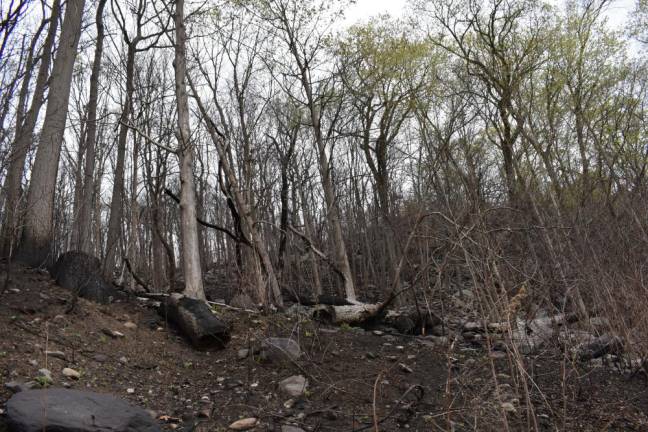
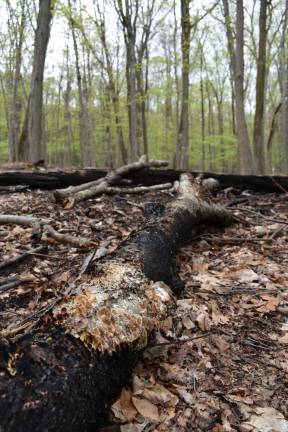
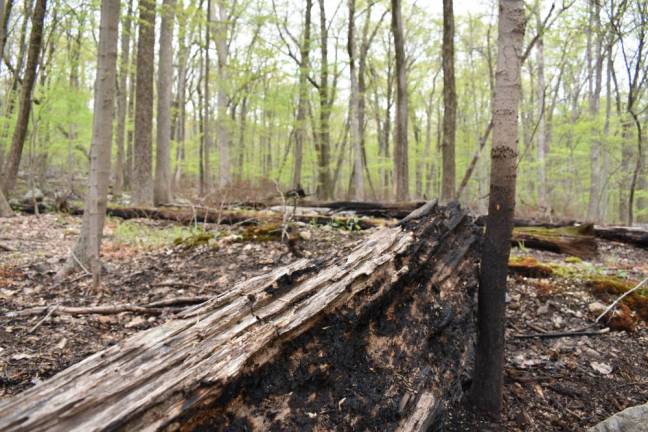
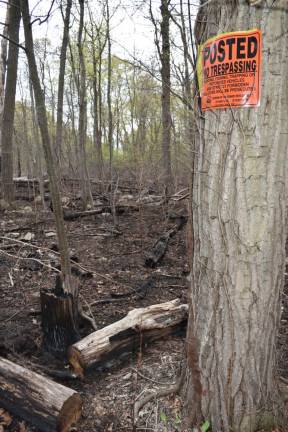
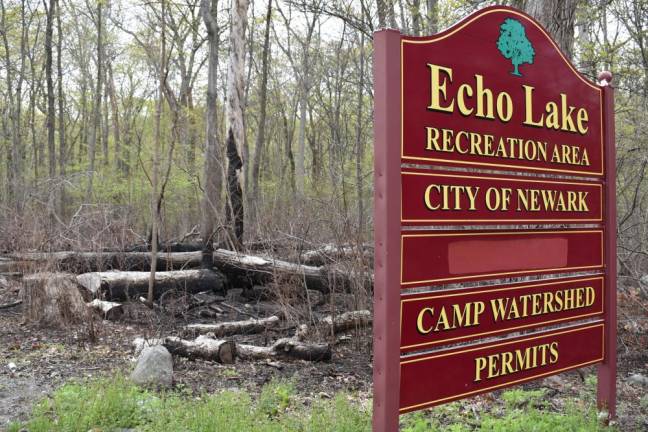
There is a silver lining to the Kanouse wildfire, which burned across 972 acres of the Newark Watershed on West Milford’s western edge near Route 23 for three days last month.
The blaze, which started Wednesday, April 12, was not full contained until Saturday, April 15.
The intense heat, strong winds and difficult terrain presented significant challenges for firefighters. Smoke-filled air, road closures and several evacuations disrupted residents and commuters alike.
Fortunately, no injuries or structural damage were caused by the wildfire, officials at the New Jersey Department of Environmental Protection (DEP) confirmed in a recent interview.
The firefighting was led by the New Jersey Forest Fire Service, which is part of the DEP, and is responsible for ongoing monitoring.
The Kanouse wildfire - the largest by far in North Jersey in more than a decade - produced a few surprises and is likely to benefit the now-charred ecosystem in the not-too-distant future.
The name given to the wildfire by DEP officials refers to affected area of the Kanouse Mountain range of the Newark Watershed and to Kanouse Road. About 1,180 feet of the road is paved and owned by West Milford; the rest of the ¾-mile span is a dirt and gravel path that runs through watershed property.
Wait for Mother Nature
In the aftermath of the wildfire, the DEP is monitoring the burn area to ensure that nothing is smoldering. It also will examine the ecosystem and further assess the situation and what response is needed.
The cause of the wildfire remains under investigation.
In its post-fire assessment, the Forest Fire Service has confirmed that the wildfire has been contained fully with no remaining smoldering or threat.
Bill Zipse, supervising forester with the service, said agency personnel are monitoring the burn area to measure the damage and examine the response of the forest, including the impact on wildlife, mortality rate of trees and new vegetation growth.
“Our early reconnaissance shows that the affected area of the Newark Watershed is in good shape overall,” he said. “Fires in early spring are not uncommon and are damaging, but new growth is coming up. If the fire had crowned (or extensively burned) treetops, we might have to do future site prep and tree planting. But that’s not the case with Kanouse.”
The term “crown fire” is applied to locations where the tree canopies are consumed by fire, meaning that all or most of the seeds stored in the canopies were destroyed, making recovery and new tree growth more difficult.
Zipse pointed out that just as wildfires have lots of variables, recovery occurs in stages and varies based on the area’s ecosystem and other factors. Also, forestry disturbances, such as wildfires, can be beneficial in the long term.
“New growth creates diversity across the forest and can be beneficial for new tree and plant species, animal populations, and other elements of the ecosystem,” he said. “We will continue to monitor and see how nature does on its own to recover - our first option is to wait and see what Mother Nature does. This could be more than one growing season, two or more. “
Emerald ash borer
Eric Weber, assistant division firewarden for Forest Fire Service, said one thing that contributed to the wildfire’s rapid spread was the large number of “snags,” or dead trees, mostly ash trees, both standing and already fallen.
“The impact of the Emerald ash borer was significant. Our firefighting crews had to deal with a lot of dead trees, debris and brush, which burned quickly and made our jobs more difficult,” he said.
Significant flying embers because of flaking bark from dead trees caused more of a problem than anticipated, he pointed out. “Unfortunately, we’ll continue to see more tree morality due to the Emerald ash borer.”
The Emerald ash borer, a highly destructive invasive insect species, was discovered in May 2014 in Somerset County, according to the state Department of Agriculture website. Infestations throughout the U.S. and Canada have killed tens of millions of ash trees since 2002.
Weber and Zipse said the state continues to study the impact of the Emerald ash borer on ash trees and the broader ecosystem as well as its effect on wildfires.
“Fire doesn’t burn through forests equally for many reasons,” Weber said. “There’s often a mosaic fire effect in the fire area,” which results in a mixture of severely burned, medium burned and lightly burned places.
That’s why, observers see a significant difference in damage across the Kanouse burn area, he said, adding that signs of recovery already are visible.
“Despite the charred landscape, nature is regenerating,” Weber said. “Re-sprouting is occurring with trees in bloom and sprouting. There is some under-story vegetation, mountain laurel and new green atop blackened shrubs all coming back up.”
Another silver lining to the wildfire was the destruction of much of the Japanese barberry shrubs, which were pervasive across the area and created difficulty for firefighters and for moving equipment, he said.
An invasive species, the shrubs can dominate deep in the woods and along woodland edges. Japanese barberry crowds out native plants and disrupts these ecosystems.
Research has shown that the presence of the black-legged tick, which transmits Lyme disease, increases in areas with dense barberry. The wildfire may allow other more beneficial species of plants and trees to grow in place of the barberry.
Busy wildfire season
Zipse and Weber acknowledge that 2023 has been an especially active fire season, with drought conditions and warm weather contributing to the number of fires.
From Jan. 1 through April 29, there were 579 wildfires in New Jersey that burned 7,914 acres. During the same time in 2022, there were 428 wildfires that burned 587 acres.
In addition to preventive measures, including tree trimming and prescribed burns, the DEP works with other state and local agencies to train personnel.
“Along with year-round training, we continually assess and learn from our experiences,” Weber said. “With the Kanouse wildfire, for instance, we were dealing with difficult terrain and the Emerald ash borer problem. One take-away is further understanding how our ecosystem has changed due the Emerald ash borer, then prepare for similar situations in the future.”
The DEP provides funding in the Forest Fire Service budget specifically for fighting wildfires across the state. Costs related to the Kanouse wildfire are yet to be determined, and monitoring activity is ongoing.
Our early reconnaissance shows that the affected area of the Newark Watershed is in good shape overall. Fires in early spring are not uncommon and are damaging, but new growth is coming up. If the fire had crowned (or extensively burned) treetops, we might have to do future site prep and tree planting. But that’s not the case with Kanouse.” - Bill Zipse, supervising forester, New Jersey Forest Fire Service
